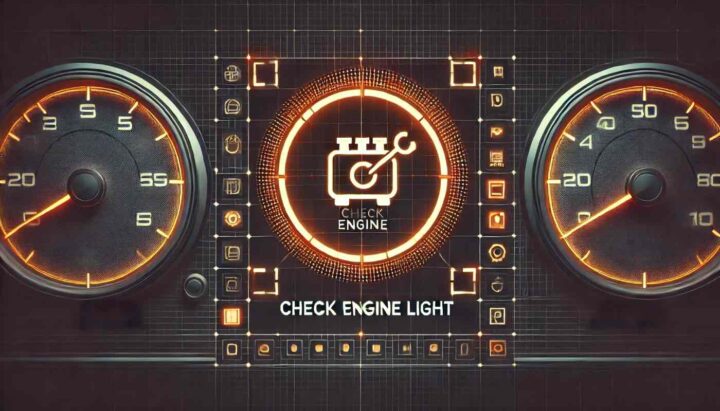Why Is My Check Engine Light Flashing Then Stops?
A flashing check engine light is often a sign of a serious issue that demands prompt attention. It could indicate problems like an engine misfire, a loose gas cap, or a malfunctioning oxygen sensor.
Sadly, many drivers tend to ignore the flashing engine light. Research from Reviews.com revealed that only 36% of drivers take their car in for inspection within a week of the light flashing. Some other concerning statistics from the study include:
- 25% of people never have their check engine light inspected.
- 29.6% wait from one month to a year before addressing the issue.
- 9.2% delay action until a noticeable problem arises.
One anonymous participant even admitted to not wanting to know the problem, assuming it’s something they can’t afford. While this reaction is understandable, it’s essential to take the flashing check engine light seriously for both safety and vehicle longevity.

This article will cover the purpose of the check engine light, why it might flash, and how to resolve the issue.
What is a Check Engine Light?
The check engine light, also known as the malfunction indicator lamp, is a warning signal from the engine’s computer system indicating something is amiss. It usually appears as an engine icon on the dashboard, though some vehicles may display the words “check engine” or “service engine.”
Types of Check Engine Light Behavior
The behavior of the check engine light can provide clues about the issue’s severity. The three main types of illumination are:
- Solid Light: If the light is steady but not flashing, it typically suggests a less urgent issue. It could be something as simple as a minor malfunction that doesn’t pose an immediate risk. Often, this light starts flashing and then becomes stable.
- Flashing Light: If the light blinks intermittently and then turns off, it indicates a temporary failure, like a wiring issue or a sensor malfunction.
- Continuous Flashing: If the light flashes constantly, it signals a severe problem, and the vehicle should be inspected immediately.
The color of the light is another crucial indicator. In some modern vehicles, a red light suggests a critical issue requiring immediate attention, while a yellow or amber light warns of a problem that should be addressed soon.
What Causes a Flashing Engine Light?
The engine light flashes when the onboard diagnostics system (OBD II) detects a malfunction in critical systems like ignition, fuel, or emissions. Various issues can trigger this light, and professional inspection is needed to identify the exact cause.
OBD II records the issue using diagnostic codes that mechanics can read with a scanner. Common reasons for a flashing check engine light include:
Engine Misfire
An engine misfire occurs when one or more cylinders fail to generate enough power to keep the engine running smoothly. There are three main causes of misfires:
- Ignition Issues: Problems with the ignition system, such as faulty spark plugs, can cause misfires.
- Fuel Mixture Issues: An improper air-to-fuel mixture can lead to inefficient combustion and misfires.
- Low Compression: If cylinders experience air or fuel leakage, compression decreases, causing engine performance to suffer. How to Fix an Engine Misfire
Diagnostics can help identify the cause. A misfire is often signaled by the code P0300. If the misfire is specific to a cylinder, it may show codes like P0301 for cylinder 1 or P0302 for cylinder 2. Repairing misfires typically involves: - Replacing spark plugs ($20 to $100)
- Replacing ignition coils ($300)
- Addressing fuel mixture or compression problems, such as replacing fuel injectors ($480) or the catalytic converter ($900–$3000)
Loose Fuel Cap
A loose or damaged fuel cap is a simple issue but can trigger a flashing check engine light. Check the cap for cracks or wear. If the cap is intact, tighten it until you hear a click. If it’s damaged, replacing it should fix the problem. Ignoring this issue could lead to fuel vapor leaks over time.
Repair Cost: Around $5
Faulty Airflow Sensor
The airflow sensor regulates the fuel-to-air ratio in the engine. A malfunctioning sensor can reduce fuel economy by up to 25%. Replacing this sensor can restore your car’s performance.
Repair Cost: $250 to $450
Failed Oxygen Sensors
Oxygen sensors monitor how much oxygen and unburned fuel are in the exhaust. A faulty sensor affects fuel efficiency and can damage the catalytic converter. Early replacement of a faulty O2 sensor is crucial to prevent expensive repairs.
Repair Cost: $150
Evaporative Emissions Control (EVAP) Malfunction
The EVAP system prevents fuel vapors from escaping into the atmosphere. Problems with its components, such as the canister vent valve or purge solenoid, can cause the engine light to flash.
Repair Costs:
- Canister vent valve: $208
- Purge solenoid: $196
- Vent control valve: $249
Resetting the Check Engine Light
After repairs, a mechanic will reset the check engine light. However, if you fix the issue yourself, you can reset the light in three ways:
- Use an OBD II scanner and select the “Erase” function.
- Disconnect the car battery for 15 minutes, then reconnect.
- Wait for three engine cycles, after which the light will reset automatically.
Why You Shouldn’t Ignore a Flashing Check Engine Light
Driving with a flashing check engine light is risky. A misfire, for example, can compromise acceleration, creating a danger on the road. Furthermore, fuel passing through the exhaust system could overheat and damage the catalytic converter, a costly repair.
Delaying repairs can also result in more significant, expensive issues down the line. Ignoring the light can make the problem worse, and neglecting it may cause irreversible damage to your vehicle. Those driving a Mercedes Benz should read about stop vehicle leave engine running which we covered previously.
It’s crucial to take the flashing check engine light seriously. Don’t risk driving a car that could cause harm to you or others. If the issue is beyond your ability to fix, have your car towed to a qualified mechanic for immediate attention. The cost of towing is far less than the potential damage to your engine or safety.


